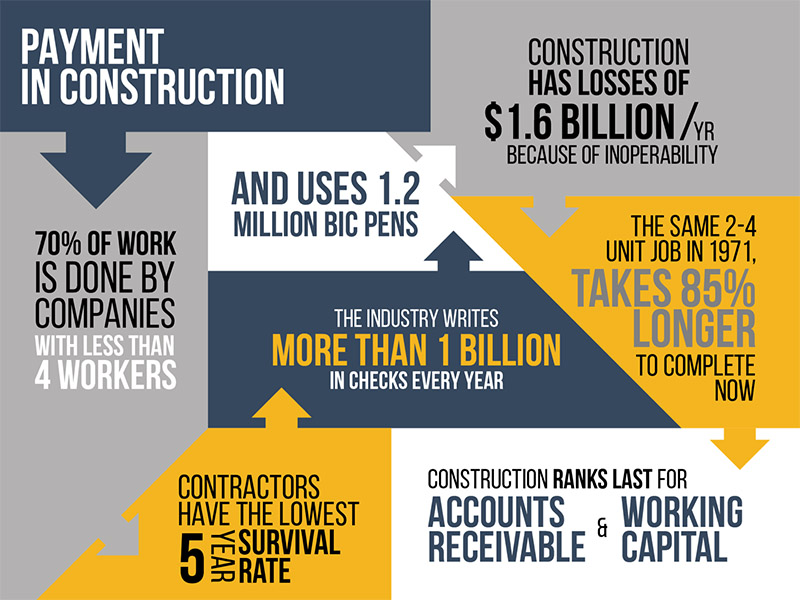By Peter Diamantis
From self-healing materials to 4D printing to artificial intelligent-driven design to robots, the construction and building industry is being drastically changed by technology.
If you could design any structure, free of all constraints, what would you envision? Put aside today’s architectural limits. What home would you dream up? Exponential technologies are converging and revolutionizing the way we design, build and inhabit everything. The global construction industry is projected to surpass $10 trillion in 2020, and the total U.S. housing stock alone grew to $31.8 trillion last year.
Both industries are ripe for massive disruption.
In this blog, I’ll be covering four key tech trends that are revolutionizing what is possible in architectural design and construction:
- Autonomous robot builders
- 3D and 4D printing
- New materials from unexpected sources
- Designs that adapt as you build
Let’s dive in.
New Materials Enter Construction
For thousands of years, we’ve been constrained by the construction materials of nature. We built bricks from naturally abundant clay and shale, used tree limbs as our rooftops and beams, and mastered incredible structures in ancient Rome with the use of cement. But construction materials are about to get a HUGE upgrade.
Here are the top three materials disrupting the future of construction:
- Upcycled Materials: Imagine if you could turn the world’s greatest waste products into their most essential building blocks.
Thanks to UCLA researchers at CO2NCRETE, we can already do this with carbon emissions.Today, concrete produces about 5% of all greenhouse gas (GHG) emissions. But what if concrete could instead conserve greenhouse emissions? CO2NCRETE engineers capture carbon from smokestacks and combine it with lime to create a new type of cement. The lab’s 3D printers then shape the upcycled concrete to build entirely new structures. Once conquered at scale, upcycled concrete will turn a former polluter into a future conserver.
Want to print houses from dirt? No problem. The Institute of Advanced Architecture of Catalonia (IAAC) can now turn any soil into a building material with three times the tensile strength of industrial clay. A massive breakthrough for developing regions, IAAC’s new 3D printed native soil can build houses on-site for as little as $1,000.
- Nanomaterials: Nano- and micro-materials are ushering in a new era of smart, super-strong and self-charging buildings.
While carbon nanotubes dramatically increase the strength-to-weight ratio of skyscrapers, revolutionizing their structural flexibility, nanomaterials don’t stop here. Several research teams are pioneering silicon nanoparticles to capture everyday light flowing through our windows. Little solar cells at the edges of windows then harvest this energy for ready use. (Thermochromic smart windows change color when exposed to sunlight.)
Researchers at the U.S. National Renewable Energy Lab have developed similar smart windows. Turning into solar panels when bathed in sunlight, these thermochromic windows will power our buildings, changing color as they do.
- Self-Healing Infrastructure: The U.S. Department of Transportation estimates a $542.6 billion backlog needed for U.S. infrastructure repairsalone. And as I’ve often said, the world’s most expensive problems are the world’s most profitable opportunities.
Enter self-healing concrete. Engineers at Delft University have developed bio-concrete that can repair its own cracks. As head researcher Henk Jonkers explains, “What makes these limestone-producing bacteria so special is that they are able to survive in concrete for more than 200 years and come into play when the concrete is damaged. […] If cracks appear as a result of pressure on the concrete, the concrete will heal these cracks itself.”
But bio-concrete is only the beginning of self-healing technologies. As futurist architecture firms start printing plastic and carbon-fiber houses like the stunner seen below (using Branch Technologies’ 3D printing technology), engineers are tackling self-healing plastic.
WATG Designs 3D-Printed Freeform House with Carbon-Fiber Reinforced Plastic
Plastic not only holds promise in real estate on Earth, it will also serve as a handy material in space. NASA engineers have pioneered a self-healing plastic that may prove vital in space missions, preventing habitat and ship ruptures in record speed.
The implications of self-healing materials are staggering, offering us resilient structures both on earth and in space.
Enhanced Design & Architecture
While incredible new materials transform what we build, AI and VR are revolutionizing how we design.
- AI-Driven Design: In the past, if you wanted to build a high-rise, you needed a static, precise blueprint. Moving parts were not an option.
Now, real-time, AI-aided Building Information Model (BIM) will enable blueprints to learn and adapt to changing ground conditions, weather, equipment and even new design ideas.
In the future, AI will help design our blueprints, optimizing construction methods, breakthrough materials, and design features. It may even recommend IoT components for our high-rises depending on their purpose and landscape.
- Virtual Reality Shaping Real Estate: In one of my previous blogs, I discussed how VR will reshape our real estate shopping experience. Forget real estate agents and physical house hunting. Why not visit a house in a different city from the comfort of your living room at 3 a.m. and see how it looks with blue walls and your own home furniture?
VR is about to transform the real estate design process too. Imagine the possibilities: you design your company’s dream office using a Building Information Model and allow your managers to walk around the (virtually) finished product before it’s ever built.
Build with Robots and 3D Printing
Designs and machinery won’t build us finished products on their own… or will they? Welcome to the new frontier of autonomous robot builders and skyscraper printers.
- Autonomous Robotics and Robot Swarm Construction: While robots have already started permeating the construction industry, what if they could construct buildings entirely autonomously?
Many are already tackling this challenge, using everything from flying robots to termite-like swarm constructors.
RoboticsX aims to send autonomous robot builders to Mars that can adapt to shifting ground conditions. CEO Peter Boras spoke of plans to scale up 3,000 collaborating robots in the hopes of building structures almost entirely unaided. The company’s X-1 Smart Industrial Robot can already collaborate with its colleagues, adapt tasks in real time, share its capabilities with other machines and perform predictive maintenance.
A team at Switzerland’s NCCR Digital Fabrication has also built a fabricator robot. Pre-programmed with design model data, the robot can build any steel-reinforced framework autonomously on-site.
Inspired by autonomously collaborative termites, Harvard robotics researchers developed swarm construction robots that can collaboratively build a programmed design, block-by-block, without centralized control.
Imagine the implications. Eliminating human safety concerns and unlocking any environment, autonomous builder robots could collaboratively build massive structures in space, or deep underwater habitats.
- 3D and 4D Printing: In one of the developments I’m most excited about, we will soon be printing tomorrow’s structures. 3D and 4D printing are redefining the way our buildings look, feel and even move.
You may have heard of the Chinese company WinSun Design Engineering Co., which printed 10 houses from recycled materials in 24 hours at a cost of about $4,800 each.
Or Dutch studio DUS Architects, who used sustainable bioplastic to 3D print a full-sized canal house in Amsterdam.
But architectural printing is only getting started.
While companies like INNOprint can print an emergency shelter in only half an hour, others are finding ways to print unprecedented designs, like this never-ending looped house, buildable with one massive robotic 3D printer.
Janjaap Ruijssenaars 3D prints prototype of house with no beginning or end
And now for the real kicker: Remember those magical moving staircases in the Harry Potter films? Turns out these may no longer be exclusive to the wizarding world.
4D printing will one day make such structures a reality. Born out of MIT’s Self-Assembly Lab, 4D printing involves 3D printed objects that can reshape and even self-assemble over time.
These structures involve 3D printing rigid and expandable materials alongside one another. When the expandable materials encounter certain conditions, like water or heat, they reshape and reposition other rigid parts of the structure.
As a result, 4D printed structures have moving joints that can reshape the entire component, whether into different shapes or stairwell directions.
Final Thoughts
With the convergence of autonomous builder robots, 3D and 4D printing, AI-guided design and unprecedented smart materials, we are about to witness the mass disruption of construction and real estate.
What new architectural frontiers will you unlock? How will your company design and print the future? What homes and space colonies will we inhabit?
Join Me
- A360 Executive Mastermind: This is the sort of conversation I explore at my Executive Mastermind group called Abundance 360. The program is highly selective, for 360 abundance and exponentially minded CEOs (running $10M to $10B companies). If you’d like to be considered, apply here.
Share this with your friends, especially if they are interested in any of the areas outlined above.
- Abundance-Digital Online Community: I’ve also created a Digital/Online community of bold, abundance-minded entrepreneurs called Abundance-Digital.
Abundance-Digital is my ‘on-ramp’ for exponential entrepreneurs – those who want to get involved and play at a higher level. Click here to learn more.
Note: This article was first received via email from Peter Diamantis.





